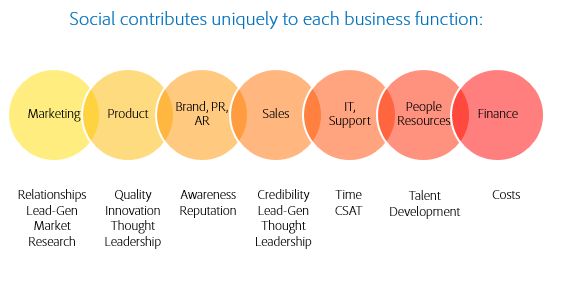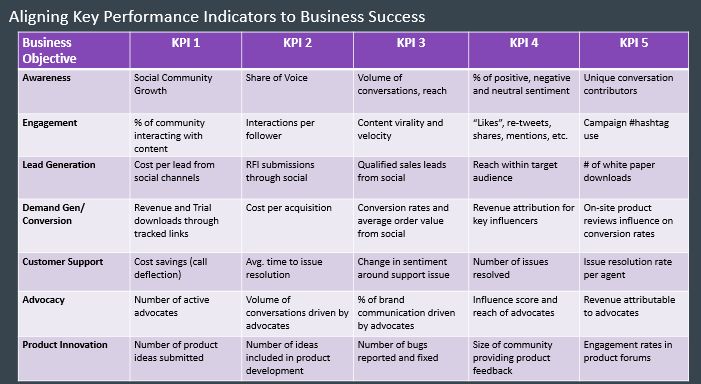With increased visibility and investment in managing and marketing on social channels comes the need to evaluate performance. Companies invest heavily in social media and executives want to know how social is contributing to the bottom line the challenge is in providing the right level of data to the right audience, while delivering key insights on measurement that will resonate with senior leaders.
Social Media’s Multilayered Contribution to Business
Social media touches more than one business function, and strategists at all levels want to know what works and what doesn’t.
Most executives aren’t interested in the details surrounding social media, but would like to know how specific programs contribute to the company and its success.
Business stakeholders want to know how social media strategies are helping their customers—how product management strategies or brand awareness is having an impact, while staff members who manage branded social media channels want to know the why and what of social media.
Multiple Levels of Reporting Is Essential
Just as there are multiple tiers of strategists and various business functions impacted by social media initiatives, there are multiple levels of reporting that must be communicated.
Tier 1: Executives. For the executive team, reporting should highlight the overall impact of social programs and, more importantly, the specific impact social programs are having on top-level business key performance indicators (KPIs). Metrics on the reports need to align to overall company KPIs, such as revenue, reputation, and ROI, showing how social programs contribute to these goals.
Tier 2: Business Unit Leadership. For management teams across varied business units, the focus of reporting should be on showing how social contributes to their individual function and unique set of objectives.
Tier 3: Social Strategists. Front-line social strategists—those who manage brand social media channels—need reports that communicate detailed, tactical information on how their content is performing day to day.
Aligning Key Performance Indicators to Business Success
With a set of clearly defined objectives, it’s possible to identify specific metrics that can be used to evaluate success.
Executive Reporting Best Practices
- Select 3–5 metrics to show direct contribution to key corporate objectives.
- Set measurable goals and show progress toward the goals on the reports.
- Show historical trends to provide at a glance view of progress, clearly identify or annotate outliers (spikes and dips that are outside the norm).
Social media has shifted the dynamic, and how people interact with brands and products is much different from just a few years ago. Today, social media is no longer experimental, but an essential channel contributing to all business functions.
- Effective reporting involves selecting metrics that will resonate with the right audience and presenting to senior leaders is best understood using a multitiered approach—showing impact and trends in a way that executives understand by mapping measurement and defined KPIs to specific business objectives.
- For reporting that resonates with senior executives, the key is in showing how top-line metrics align to key objectives and providing insight into how these results impact the bottom line.
The post Presenting Social Media Measurement to Senior Leaders appeared first on Digital Marketing Blog by Adobe.

